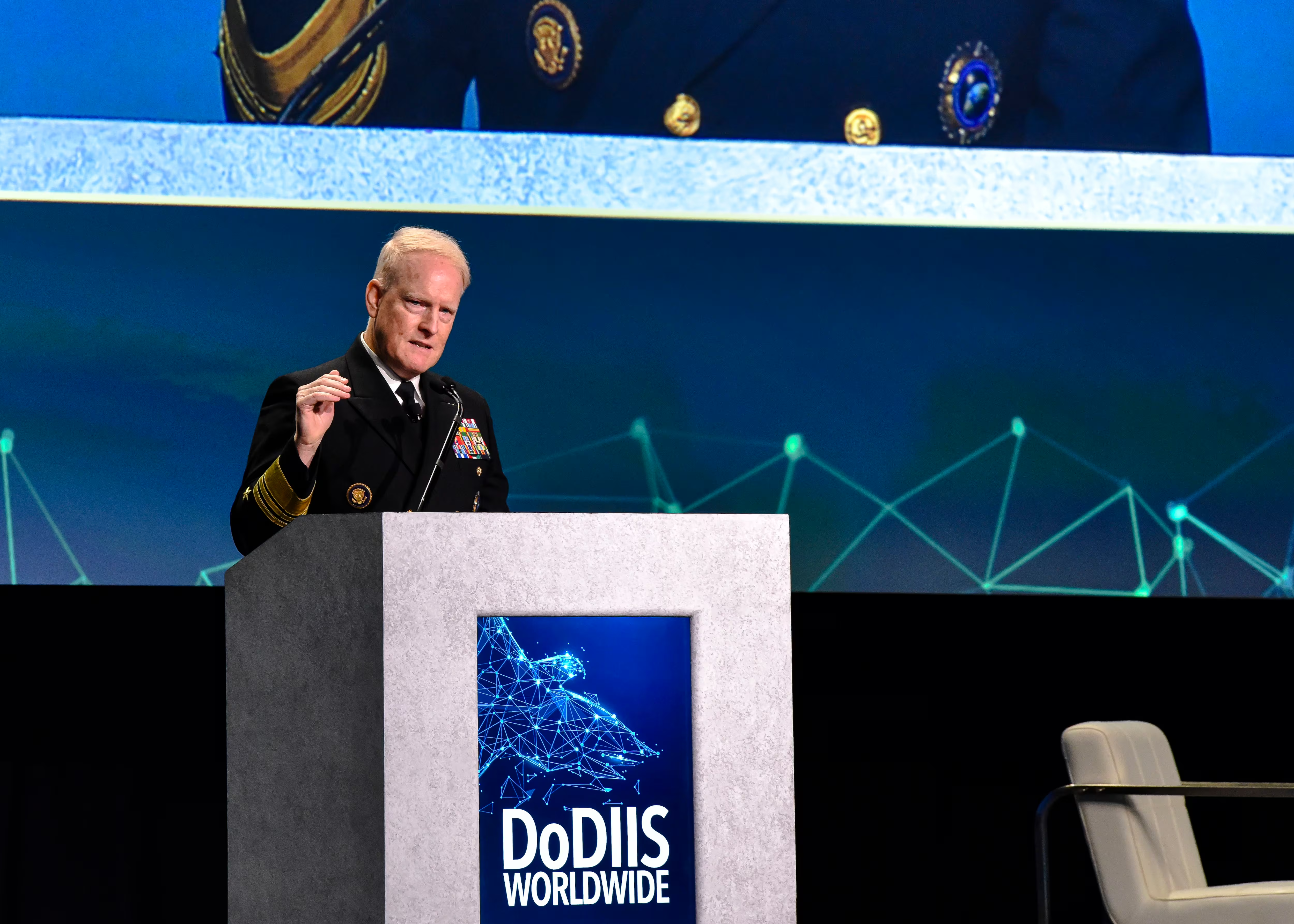Computers on the battlefield take a beating.
Beyond the everyday wear and tear, they also must endure extreme temperatures and often violent vibrations. To help ensure its systems give soldiers and commanders the information they need, the Army relies on its Mounted Family of Computer Systems program. Known as MfoCS, pronounced em-fox, the program covers detachable tablets to fully-loaded, vehicle-mounted workstations.
C4ISRNET spoke recently with Bill Guyan, vice president of business development for Leonardo DRS, about advances in battlefield computing.
C4ISRNET: We hear a lot about a new emphasis on the hardening of security of contractors. And not just contractors, but primes, and then their contractors. Obviously this has become a point of concern for DOD leadership.
Bill Guyan: One of the big areas of emphasis for the Army in the procurement of the [Mounted Family of Computer Systems] (MFoCS) and particularly MFoC2 II, were areas related to security, both from a cyber security standpoint and the ability to assure that the system was free from malware or any external threat. So there’s a very comprehensive supply chain risk management strategy put in place and for this program we believe that this is the most secure edge computing system that the Army’s ever purchased.
It’s absolutely critical that it be so, since ultimately there will be somewhere between a 100,000 and 125,000 of these systems fielded across the Army and Marine Corps, at the edge of the battlefield with each one of these systems serving as potential on ramp to the network and in an area of situational awareness that is absolutely mission critical. There was a time when we derived quick benefit from having an advantage and a capability that our opponents didn't. And over time the capability has evolved from a nice to have capability to a mission critical capability that we'd be hard pressed to fight without.
C4ISRNET: The Army has put a lot of emphasis on size, weight and power. Can you explain how that manifests itself on the battlefield?
Guyan: We optimize size, weight and power in two ways. At the hardware level we optimize by staying at the leading edge of available technologies, available commercial technologies and rapidly adapting and adopting them for employment in this mission critical extreme environment. The computers and displays are the soldiers' path to the network. It has to work at -40 centigrade and it has to work at 80 degrees centigrade. It has to work in extreme vibration and it has to work in contested EMI environments. It has to work all the time.
For example, we led the charge in the adoption and fielding of solid state hard drives versus rotating media, which allowed us to not only improve the resiliency of the system, but also to reduce size, because we no longer have to isolate the rotating hard drive from the shock and vibration.
We also migrated from the old backlight technology to an LED backlight, which is much more reliable, particularly in shock vibration at temperature extremes. But it also requires far less power.
The other thing that we've been able to do is rapidly adapt the latest processor technologies when they're available. Of course, processors continue to get faster, smaller, and use less power. We're able to make sure that every generation of system can deliver more computing capability for less power, and less power means less heat.
C4ISRNET: What kind of conditions can some of this hardware endure today that five or 10 years ago would have been a lost cause?
Guyan: Now we’re able to operate our computer at its maximum capacity, its fastest speed throughout the entire range of environmental temperatures. It used to be that the initial systems, and like your laptop now, when it reaches a certain temperature, it will throttle down and start to reduce its processing speed in order to control its internal temperature to prevent damage to the system itself.
For the last eight or nine years now we've been able to deliver the very latest multi core processing solution. The same kind you'd buy in store, available from the big name suppliers. We've been able to supply that latest processor with the capability that doesn't throttle back at all with extreme temperatures.
It’s important because if the system is going to be mission critical, we can’t afford to have it break and stop working when somebody needs to use it. We also can’t afford to throttle it back and have it not work as well as needed. Sometimes the computers are used to call for life saving response, Medevac, or call for artillery support, or to send a critical message in the heat of combat. It just has to work all the time.








